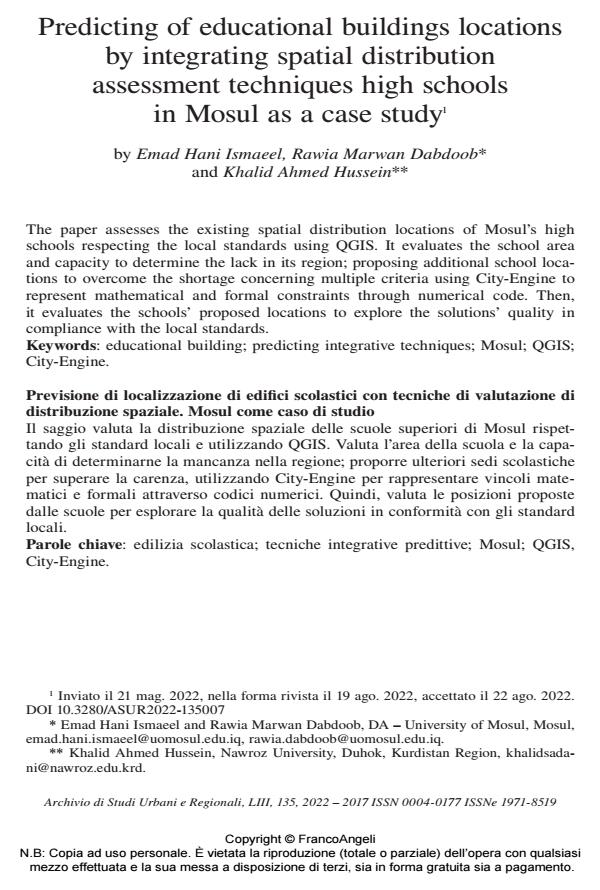Predicting of educational buildings locations by integrating spatial distribution assessment techniques high schools in Mosul as a case study1
Titolo Rivista ARCHIVIO DI STUDI URBANI E REGIONALI
Autori/Curatori Emad Hani Ismaeel, Rawia Marwan Dabdoob, Khalid Ahmed Hussein
Anno di pubblicazione 2023 Fascicolo 2022/135
Lingua Inglese Numero pagine 25 P. 135-159 Dimensione file 833 KB
DOI 10.3280/ASUR2022-135007
Il DOI è il codice a barre della proprietà intellettuale: per saperne di più
clicca qui
Qui sotto puoi vedere in anteprima la prima pagina di questo articolo.
Se questo articolo ti interessa, lo puoi acquistare (e scaricare in formato pdf) seguendo le facili indicazioni per acquistare il download credit. Acquista Download Credits per scaricare questo Articolo in formato PDF

FrancoAngeli è membro della Publishers International Linking Association, Inc (PILA)associazione indipendente e non profit per facilitare (attraverso i servizi tecnologici implementati da CrossRef.org) l’accesso degli studiosi ai contenuti digitali nelle pubblicazioni professionali e scientifiche
The paper assesses the existing spatial distribution locations of Mosul’s high schools respecting the local standards using QGIS. It evaluates the school area and capacity to determine the lack in its region; proposing additional school loca- tions to overcome the shortage concerning multiple criteria using City-Engine to represent mathematical and formal constraints through numerical code. Then, it evaluates the schools’ proposed locations to explore the solutions’ quality in compliance with the local standards.
Il saggio valuta la distribuzione spaziale delle scuole superiori di Mosul rispet- tando gli standard locali e utilizzando QGIS. Valuta l’area della scuola e la capa- cità di determinarne la mancanza nella regione; proporre ulteriori sedi scolastiche per superare la carenza, utilizzando City-Engine per rappresentare vincoli mate- matici e formali attraverso codici numerici. Quindi, valuta le posizioni proposte dalle scuole per esplorare la qualità delle soluzioni in conformità con gli standard locali.
Parole chiave:edilizia scolastica; tecniche integrative predittive; Mosul; QGIS, City-Engine.
Emad Hani Ismaeel, Rawia Marwan Dabdoob, Khalid Ahmed Hussein, Predicting of educational buildings locations by integrating spatial distribution assessment techniques high schools in Mosul as a case study1 in "ARCHIVIO DI STUDI URBANI E REGIONALI" 135/2022, pp 135-159, DOI: 10.3280/ASUR2022-135007